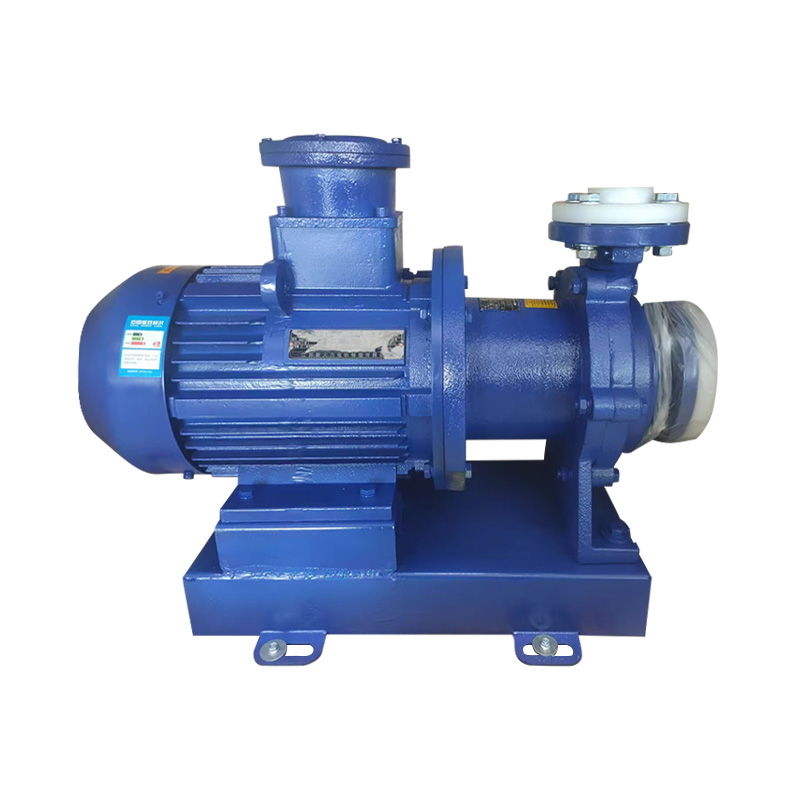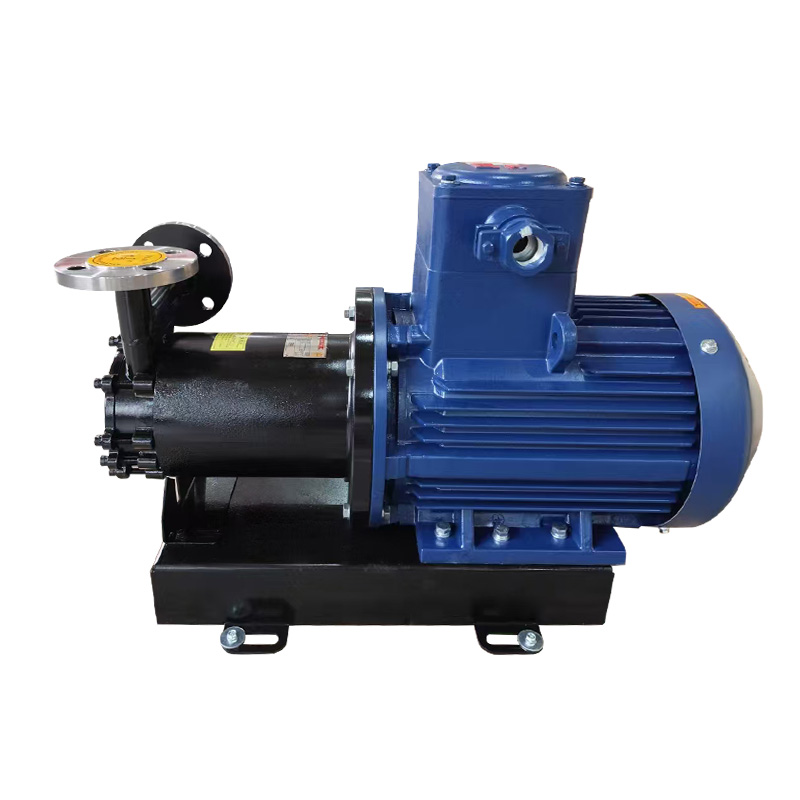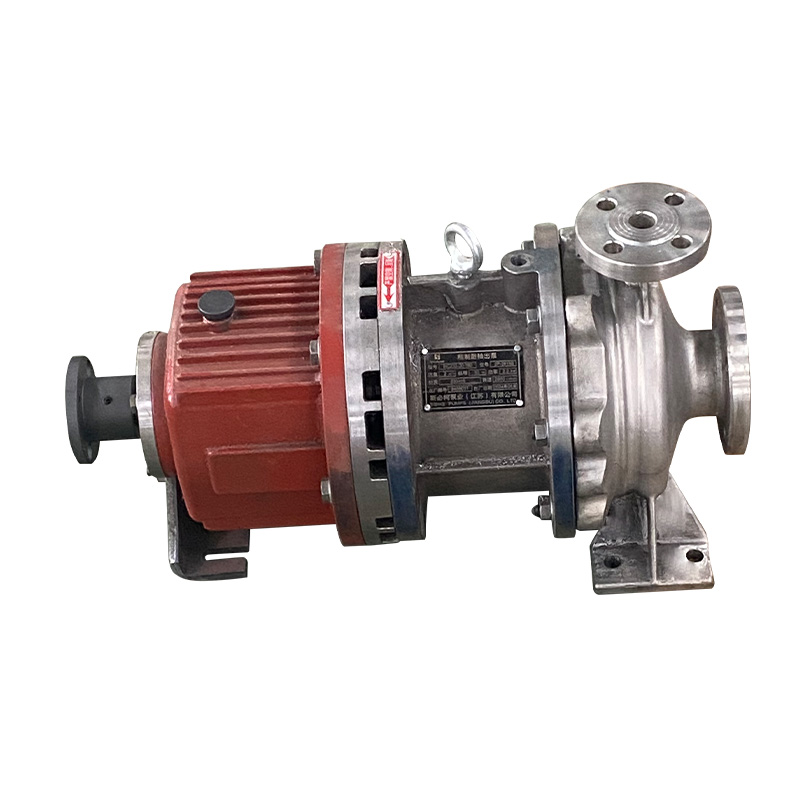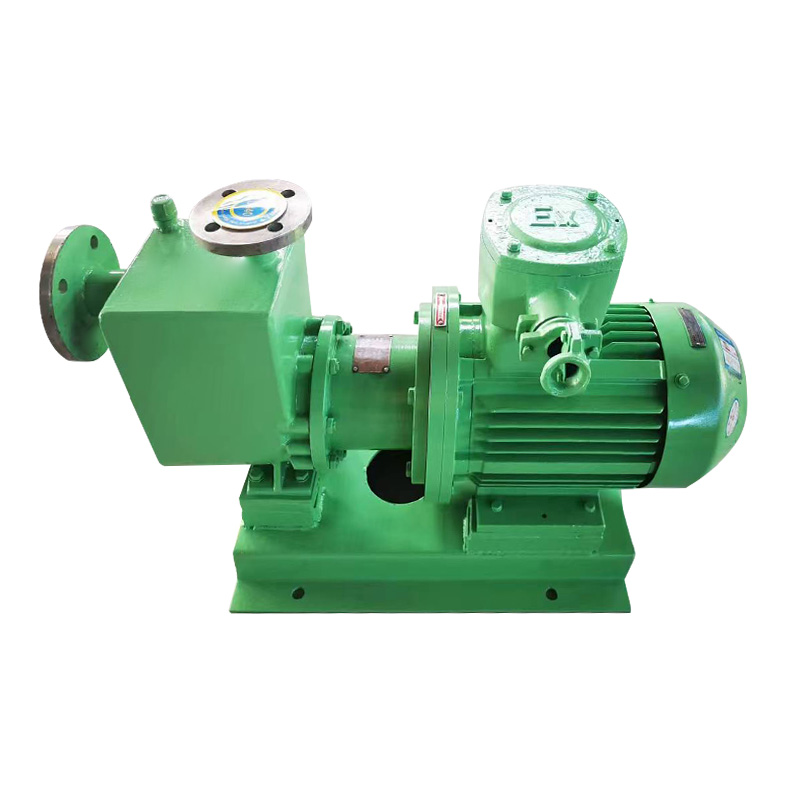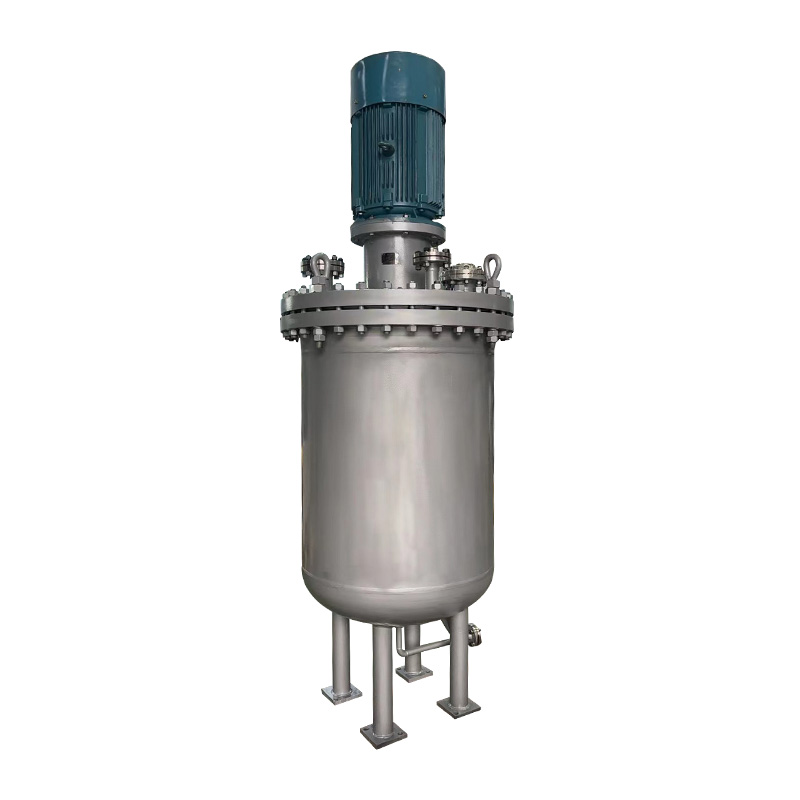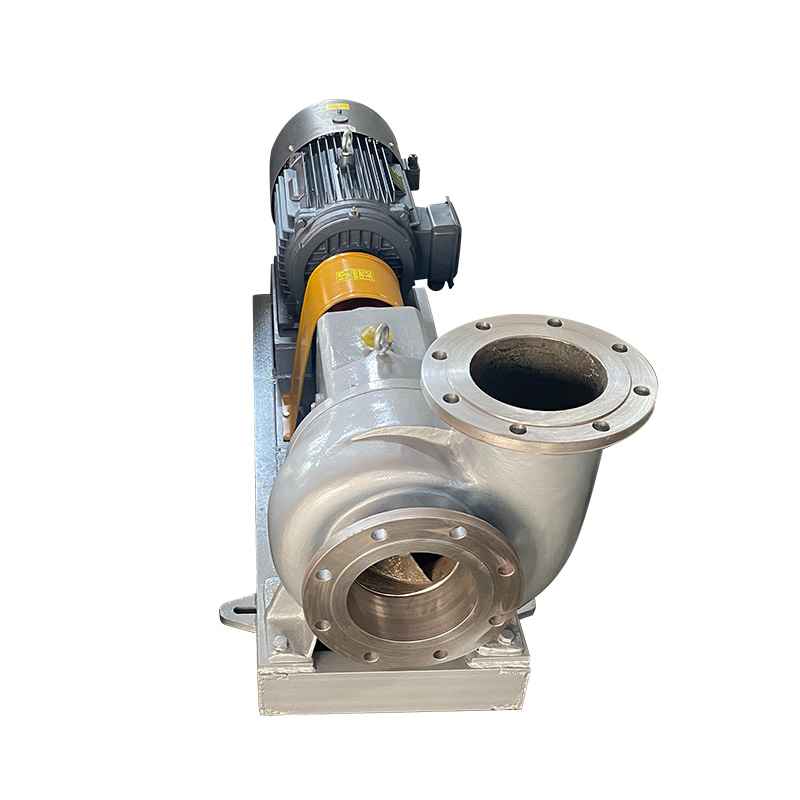In the complex processes of modern chemical production, liquid conveyance is a crucial link throughout. Traditional centrifugal pumps often expose various problems when handling highly corrosive, volatile, or high-temperature chemical media. For example, manual priming is required before initial startup, which is not only time-consuming and labor-intensive but also increases the risk of operators contacting hazardous chemicals. Meanwhile, pump bodies and components are easily damaged under long-term erosion by corrosive media, leading to frequent shutdowns for maintenance and seriously affecting production efficiency. However, an innovative device called corrosion-resistant self-priming chemical centrifugal pump is providing new solutions to these problems with its unique design and outstanding performance. Integrating three core functions—self-priming, corrosion resistance, and high-temperature resistance—it aims to completely transform the operation mode of traditional chemical pumps, making complex chemical conveyance work simpler and more efficient than ever before.
Breaking Free from Traditional Constraints: The Innovation of Self-Priming Corrosion-Resistant Chemical Pumps
The working principle of traditional centrifugal pumps relies on the pump body being filled with liquid before startup to generate sufficient centrifugal force for drawing media. This is not a problem when handling liquids in elevated tanks, but when the pump is installed below the liquid level, manual priming or auxiliary equipment is required. Self-priming centrifugal pumps completely subvert this model. They feature a unique liquid storage chamber and gas-liquid separation device in the pump body, enabling the pump to automatically expel air from the suction pipeline after initial startup, creating a vacuum to draw liquid in automatically. This process requires no external assistance, greatly simplifying operational procedures and reducing labor costs and safety risks.
When this self-priming function is combined with corrosion resistance, a powerful tool is created. This type of pump can effectively resist erosion when handling corrosive liquids such as acids, alkalis, and salts, ensuring long-term stable operation. Additionally, its high-temperature resistance allows it to handle high-temperature liquids like hot water, hot oil, or high-temperature corrosive chemicals, expanding its application range and truly achieving a comprehensive transcendence of traditional pump technology.
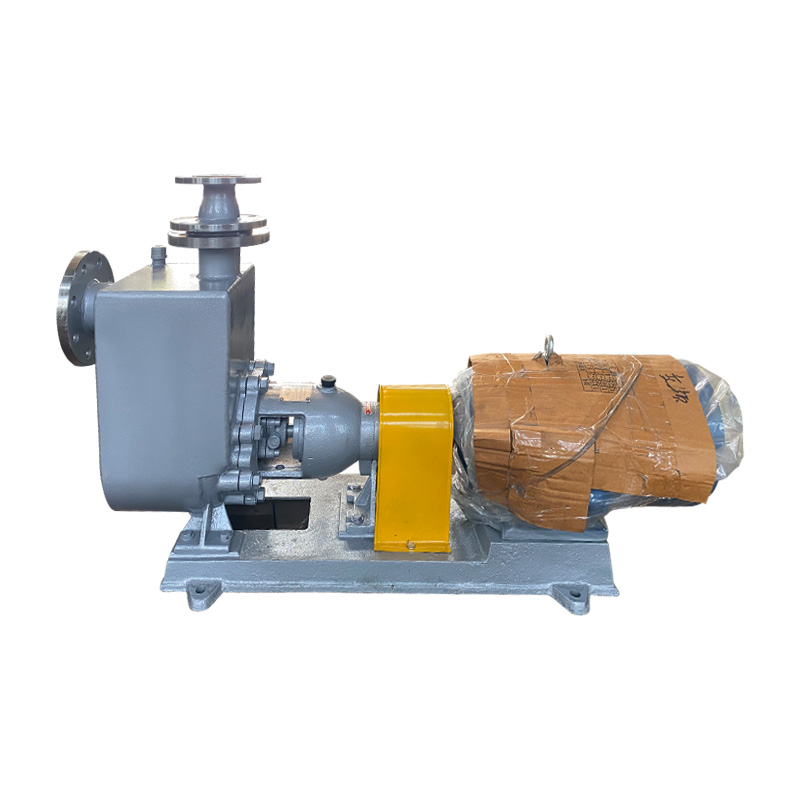
The Secret of Fluoroplastic Materials: The Ultimate Solution for Chemical Pump Corrosion Resistance
In the world of chemical pumps, material selection is a decisive factor in determining performance and service life. Faced with harsh media such as strong acids, alkalis, and oxidants, ordinary metal materials often fail. Fluoroplastics, with their exceptional corrosion resistance, have become the ultimate solution in the field of chemical pump corrosion protection.
Materials in the fluoroplastic family, such as FRPP (glass fiber-reinforced polypropylene) and PVDF (polyvinylidene fluoride), exhibit strong chemical inertness due to the stable carbon-fluorine bonds in their molecular structures, hardly reacting with any chemical substances. Using fluoroplastics as linings or direct materials for key components like pump bodies, impellers, and mechanical seals forms an impenetrable anti-corrosion barrier, fundamentally preventing media from eroding the pump body. For example, when handling strong acids such as sulfuric acid, hydrochloric acid, and nitric acid, fluoroplastic pumps demonstrate remarkable stability, far surpassing traditional metal pumps made of cast iron or stainless steel.
These materials not only resist corrosion but also offer good wear resistance and mechanical strength, allowing the pump to maintain stable performance even when conveying corrosive slurries containing small amounts of solid particles, significantly extending equipment service life and reducing enterprises’ overall operating costs.
Challenges of High Temperature and Wear: Special Materials Forge Pump Toughness
Beyond corrosion, high temperature and wear are two other severe challenges faced by chemical pumps. Many chemical processes operate under high temperature and pressure, where traditional pump materials suffer significant performance degradation or even structural damage at high temperatures. Meanwhile, some media contain large amounts of solid particles, causing severe wear to pump impellers and mechanical seals.
To address these challenges, corrosion-resistant self-priming chemical centrifugal pumps adopt various special materials and structural designs. For instance, when handling high-temperature corrosive media, pump bodies may use specially modified fluoroplastics with higher heat distortion temperatures, enabling stable operation over a wider temperature range. Critical dynamic seals—mechanical seals—utilize combinations of high-temperature, corrosion-resistant, and wear-resistant materials such as silicon carbide, graphite, and Teflon, ensuring reliable sealing performance even in high-temperature and high-pressure environments.
For particle-containing media, thickened or specially designed impellers and high-hardness silicon carbide or alumina ceramics are used as wear-resistant components, effectively resisting particle erosion and ensuring long-term stable pump operation, bringing high reliability and safety to enterprises.
Precision Selection Guide: How to Find the Best Pump for Your Chemical Process?
Selecting a suitable pump for complex chemical processes is no easy task. It requires comprehensive consideration of multiple factors to ensure the equipment’s performance perfectly matches the working conditions.
-
Medium characteristics: This is the most important factor, including the medium’s chemical composition, temperature, viscosity, specific gravity, and whether it contains solid particles. This information directly determines the material selection for pump bodies, impellers, and seals. For example, fluoroplastic pumps are preferred for strong acids, while stainless steel or high-temperature alloy pumps may be considered for neutral or weakly corrosive high-temperature media.
-
Flow rate and head requirements: Flow rate refers to the volume of liquid to be conveyed per unit time, and head is the height and pipeline resistance the pump needs to overcome. These two parameters are core to selecting pump models; oversized or undersized pumps will affect efficiency and service life.
-
Installation environment: The self-priming height and suction pipeline length of self-priming pumps are important considerations, which should meet actual working condition requirements.
A professional selection engineer will comprehensively analyze these parameters and recommend the most economical, reliable, and suitable pump solution based on the characteristics of different media. Precise selection not only ensures smooth production processes but also significantly reduces later maintenance costs and energy consumption.
Opening a New Chapter of Efficiency and Safety: Future Prospects of Self-Priming Chemical Pumps
The emergence of corrosion-resistant self-priming chemical centrifugal pumps is not just a technological advancement but also a profound innovation in modern chemical production concepts. With its high automation, excellent corrosion resistance, and strong adaptability to working conditions, it brings unprecedented convenience and safety guarantees to enterprises.
In the future, as environmental regulations become increasingly stringent and Industry 4.0 advances, the development prospects of this pump technology will be even broader. On one hand, progress in materials science will lead to new composite materials with better corrosion resistance, higher temperature resistance, and improved wear resistance, further expanding the performance boundaries of pumps. On the other hand, integration of intelligent sensing and IoT technologies will enable pumps to feature real-time monitoring, remote control, and fault prediction capabilities. By analyzing real-time pump operation data (such as vibration, temperature, and flow rate), predictive maintenance can be realized, eliminating faults in their early stages and minimizing unplanned downtime.
This intelligent development direction will make corrosion-resistant self-priming chemical centrifugal pumps an indispensable part of future smart factories, opening a new chapter of efficient, safe, and energy-saving chemical production. Its value has long surpassed that of a simple liquid conveyance tool, becoming an important strategic asset for enhancing enterprises’ core competitiveness.



 English
English русский
русский Español
Español